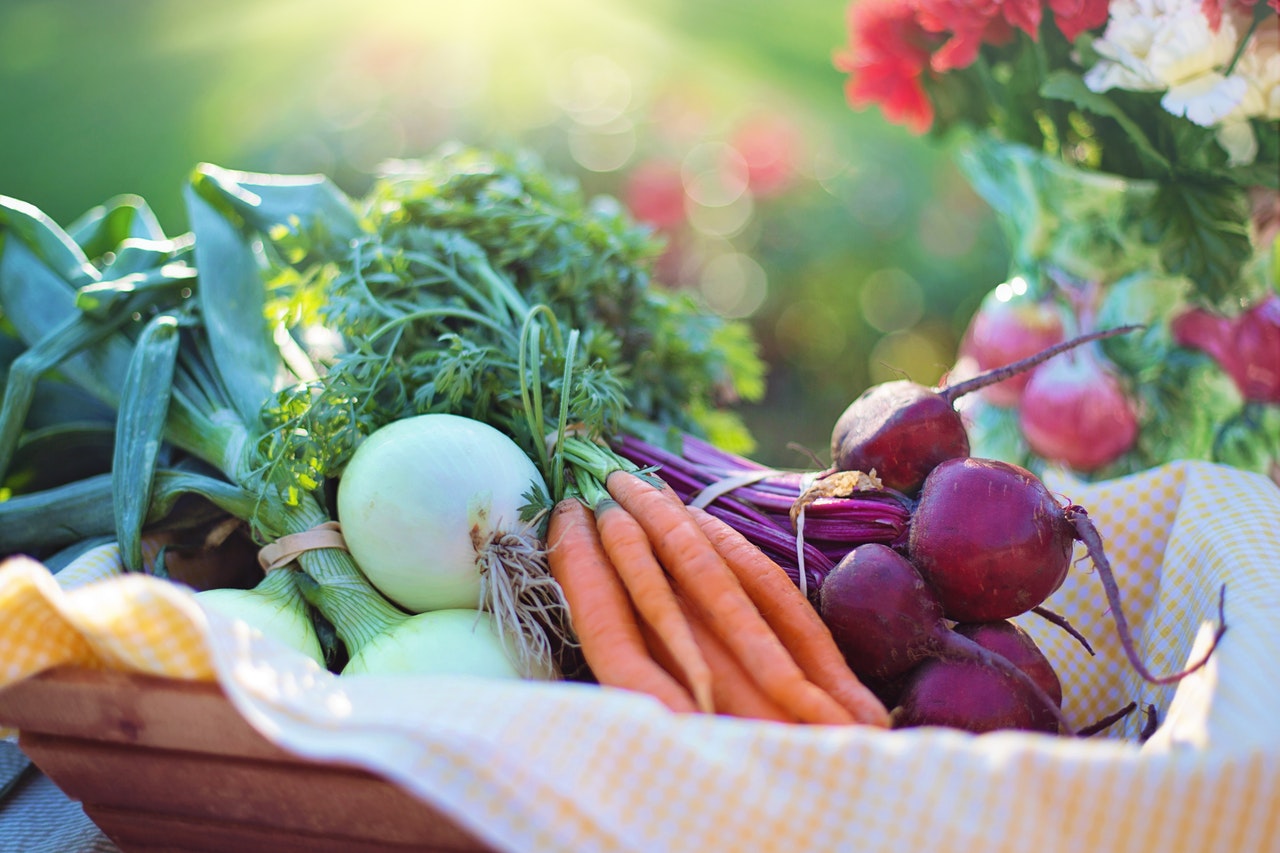 Gardening is a hobby I’ve grown (pun intended) to love since becoming a stay at home mom. Friends and family found it a bit comical in the beginning because I was a true city girl who never had a passion for anything involving the great outdoors. Even my husband watched from afar to see if this newfound hobby would really last. Truth be told, they had reason for their speculation. Keeping plants alive in my house was impossible. I forgot they were there, never watered them, or got bored with them. And in my defense, I still don’t care for houseplants!
Gardening is a hobby I’ve grown (pun intended) to love since becoming a stay at home mom. Friends and family found it a bit comical in the beginning because I was a true city girl who never had a passion for anything involving the great outdoors. Even my husband watched from afar to see if this newfound hobby would really last. Truth be told, they had reason for their speculation. Keeping plants alive in my house was impossible. I forgot they were there, never watered them, or got bored with them. And in my defense, I still don’t care for houseplants!
Then I got pregnant! I have no idea what clicked in my life, but not only did gardening become a must, but so did crafting and sewing. I mean, what the heck, isn’t that something! So after proving to all that I was sticking with this newfound creative gene the craft room was designed and the garden beds were built.
The Making of “Pepper’s Garden”

Whether you’re a stay at home mom looking for a hobby or a working mom who needs something to clear her mind, gardening is a nice option. You can start small with a few plants on your deck or porch and expand as your comfort level increases. It is such a fun activity to do with your children as well. I love watching my daughter eat green beans, cucumbers, and tomatoes right off the vine. I absolutely love seeing her play in the dirt so she can grow her own food. She could identify so many fruits and vegetables at two years of age that it blew me away. And because she was helping me grow them, she wasn’t afraid to eat them! How awesome is that?!
So why blog about it? Well, I was offering gardening advice to some interested moms when I thought about how helpful it has been to have others guide me along my way. Internet surfing is certainly a tool gardeners use, but in my experience having a live body to chat with is most beneficial. And that is the perfect segue to my first batch of tips:
Utilize Your Resources
- Local farms and greeneries are great for home gardens because they grow their seedlings locally. They know your climate and the weather outlook for the season. Since the growers have history with your climate they have a wealth of knowledge for making your garden that much more successful. As a gardener, it’s definitely a relationship worth developing. Yes, you can certainly buy seedlings at big box stores and have a fantastic garden, but local farms have such charm about them and are worth supporting.
- Join gardening groups on social media and if you have a Pinterest account create a board for gardening. We created our raised beds (pictured above) from ideas we got online. And to tie this in with developing relationships with local farms, after we designed our beds we went to a local farm and they mapped out what we could plant where. You will have so many ideas your head will spin but the discussions and/or pictures are invaluable.
- Gardeners LOVE to discuss their successes AND their failures. Find someone to grow with! You will be surprised how much you learn from one conversation. One tip can save your whole okra stalk (see the “oops” section below for more on that)!
Know the lay of the land
From water flow when it rains to where the sun rises and sets. It’s beyond imperative to know your yard elevation, the rain flow pattern, and the amount of sun the garden will get. We set out to build “Pepper’s Garden” and did not evaluate the affect of rainfall on our garden. After the beds were built we laid down mulch; a time-consuming and pricey project. The first year these beds were laid it rained all summer and all the mulch washed away. Not only that, but the grass in the non-gardening area (ahem, where my daughter plays) went from plush to patchy! WHOOPS! We had to build a French drain to correct the problem. Life goes on but I would rather have avoided these problems.
Planting
- Even plants have BFFs and archenemies! Crazy but true! It’s referred to as companion planting/gardening. When I started gardening I just picked up something that interested me at the grocery store and planted that sucker! Easy peasy, right?! Ugh, well…not really. You have to know what grows well together. There are a plethora of charts available. I do not plant or even purchase a fruit or vegetable without checking to see if it will grow in the intended space.
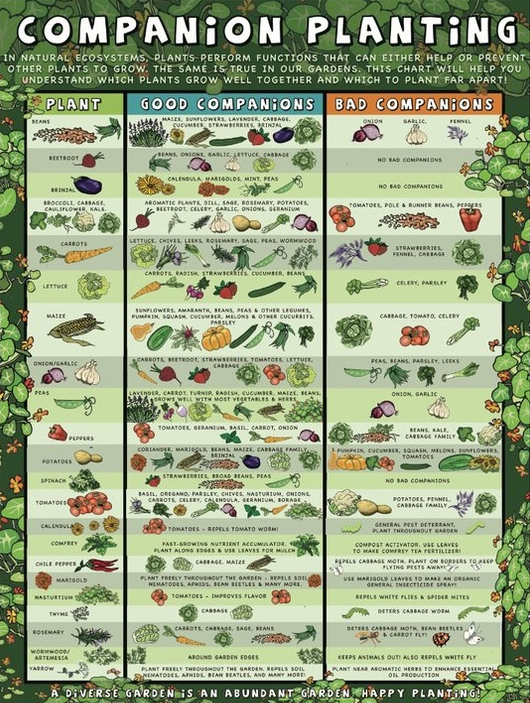
- Gosh darn it – follow the dang guidelines on seed spacing. Clearly, a big lesson learned here for me. My first year I grabbed a bag of potatoes to plant. I had no idea how they grew. Heck, I didn’t even know I could grow tons of potatoes from one store bought one. I saw the bulbs and went for it…I was feeling adventurous! I came home and planted 10 bulbs in a 2’x3’ box. The leaves were green and big! I was so excited I couldn’t see straight. We pulled the potatoes and they were tiny because they didn’t have space to grow. (The former manager in me is tying this lesson into a personal growth lesson as well! Both people and plants need room to grow!)
- Know how long it takes for your veggies to harvest! I giddily planted Brussels sprouts and after two months I was like “what is growing on here!” My husband saw me getting frustrated and surfed the net only to inform me that those little farts don’t harvest until late in the season. Garden space is a prized commodity and while I love sprouts I wouldn’t have given them that much space.
Objects in Picture are Smaller than they Appear
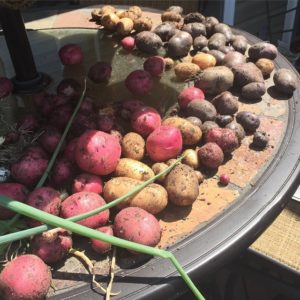
Time
- When you purchase six cabbages because you have learned that they are “one and done” remember that you, hopefully, will have six cabbages harvesting at the same time. So if you aren’t a big cabbage eater don’t be greedy with your garden space. As easy as it is for me to say that, I never follow it. Hopefully you will do better than me! When you’ve had half your crop fail in previous season(s), you feel compelled to implement your “just in case” planting strategy and plant far too many like you’re running a restaurant, but that’s the time it all succeeds and you have no room for everything.
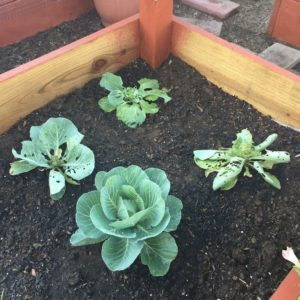
- I discussed this briefly in the planting section but knowing the harvest time and timeframe (one and done – cabbage, versus continued production – okra) is imperative. As an amateur gardener I still find myself operating like everything takes 6-8 weeks to grow. But when you are picking okra every day from July-September you learn pretty quickly that you need to do your homework!
- Learn when to plant, pick, prune, and purge. Each veggie/fruit is different. While your tomatoes are high maintenance divas, your cabbage is all about chill time. Okra can grow into October depending on the climate, but after so much harvesting remember it’s ok to purge it. Let it go…let it go!
- We always forget about the most valuable resource in gardening – the gardener! You are making a commitment! Be prepared to give up time (and money) for your hobby. I find it to be quite therapeutic. I love to turn on some Coltrane and head out. Other times I’ll pray and go into a peaceful state. When my daughter is with me it becomes an educational moment. No matter how relaxing or fun it is…it is still work. I’m evaluating it daily for water, pruning, or harvesting. Make sure you are finding you’re happy in your hobby!
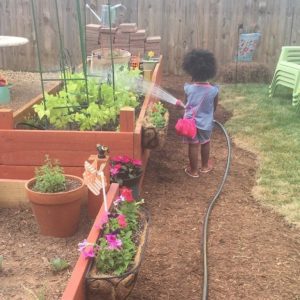
BUGS
Bugs…there will be bugs. And more often than not, they are not your friends. They are hungry little creatures and their sole purpose is to eat your crop. Get on them fast, as in yesterday! Any garden center can help you determine what species it is and how to treat them.
OOPS!
- If it looks pretty, it could be evil. I had this gorgeous vine and flower growing around my okra. I took pictures of it and was showing it off to a fellow gardener. I was just as proud!!! Imagine my surprise when I found out, in time thank goodness, that it was a strangling weed vine. I learned right then to question anything growing that I did not plant.
- My tomatoes wouldn’t grow because they like room. You have to prune them often and in my garden they take the most time of anything I grow. I learned the hard way how to tend to them. So, know which tomatoes to prune, when to prune them, and what can be done with what you’ve pruned! THERE IS SO MUCH TO LEARN!
- NEVER promise everyone you’ll share your crops! Because they taste so good you end up eating quite a bit yourself! AND because you spend so much money and time growing them you want to enjoy the fruits of your labor! You’ll learn what works for you, what you want to share, and what you want to hoard. Last year I promised every cucumbers and grew none – literally, NONE! Moms have enough guilt and self-imposed shame as it is. Imagine how I felt saying yeah, those didn’t quite work out!
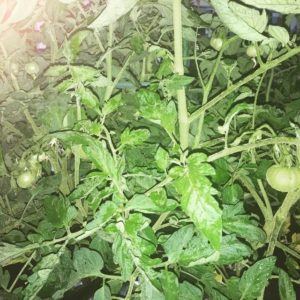

Hopefully, I’ve piqued your interest in this lovely hobby of mine. I can’t say enough of what a fun mother/child experience it is. If my daughter is home when is time to prune, she is on my heels to help out. She is only four but I look forward to our little talks out there. Again, start small and expand each year. Don’t be mom of the year and go gangbusters because it seems fun. Take the family to the local nursery and have everyone pick out a fruit or vegetable they would like to grow and make it an enjoyable learning experience. It certainly is for Team Rodriguez!
Pepper’s Garden
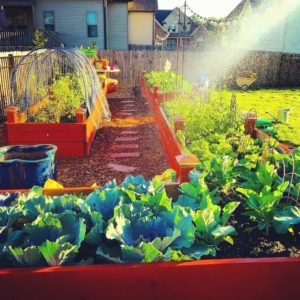






















[…] plant sale is coming up on September 9 and 10 would be a perfect time to grab some goodies for your garden and check out the property at the same […]
Comments are closed.